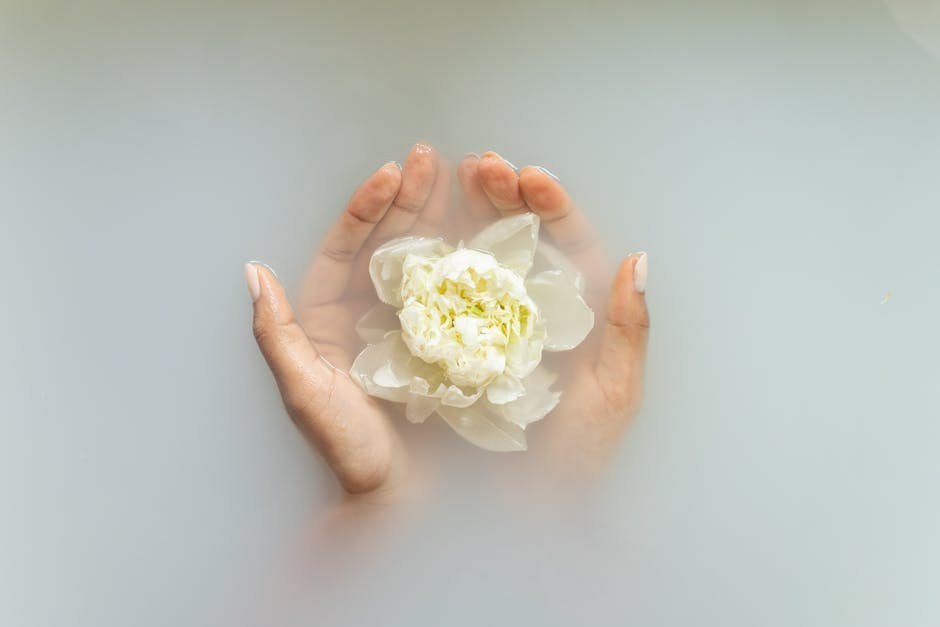There’s a quiet magic in a first shared kiss – a pulse that quickens, a breath that syncs, a sense that the moment could unfold into something unforgettable. Learning how to make out isn’t about memorizing tricks so much as tuning yourself to the other person’s rhythm and responding with ease. In practice, that means balancing tenderness with boldness, curiosity with patience, and intention with consent. If you want to make out in a way that leaves both of you glowing, use the ideas below as a flexible roadmap rather than a rigid script.
Before Lips Meet: Setting the Stage for Chemistry
Great sessions begin long before lip contact. The environment you choose can either support the moment or constantly tug you out of it. Dimmer light, soft background sound, and a seat where bodies naturally angle toward each other make it simpler to maintain eye contact and read cues. Silence can be powerful too – the pause between sentences often invites the next step.
Equally important is mindset. The more pressure you place on yourself to make out “perfectly,” the more likely you are to miss subtle signals. Treat the meeting point as an experiment. Bring presence, not performance. Your goal is connection, not choreography.

Core Principles to Keep in Mind
- Consent is the constant. Ask in a way that feels natural – a soft “Can I kiss you?” whispered close, or a relaxed, playful “I want to kiss you right now.” When you make out, that initial yes remains your north star; keep checking in with touch and pace.
- Pacing over pressure. You’re building heat, not flipping a switch. Slow, thoughtful escalation tends to feel richer than jumping ahead.
- Presence beats technique. Technique matters, but attunement matters more. When you make out while paying attention, your moves refine themselves.
A Practical Roadmap You Can Adapt
Think of the sequence below as a spiral rather than a straight line. You can loop, repeat, or linger. Let your partner’s responses shape how you make out so the moment stays alive and responsive.
- Choose comfort first. A quiet corner or a sofa with space to turn toward each other keeps distractions low. Put your phone on silent. When you make out, uninterrupted time allows the connection to thicken naturally.
- Let the mood arrive. Don’t force it. Share a story, watch something light, or just sit close enough that knees or shoulders brush. The point is to soften the edges until the next move feels organic.
- Approach without rushing. Lean in gradually; allow your breath to mingle. This unhurried glide tells your partner you read their comfort – a vital signal when you make out for the first time.
- Build tension with proximity. Hover near the mouth without landing, tracing a fingertip along the jaw or tucking hair behind an ear. These micro-moves make out moments feel electric because anticipation does half the work.
- Make contact gently. Start with soft, closed-mouth kisses. Let your lips land and lift, then land again with slightly more pressure. You make out beautifully when you resist the urge to “do” too much and simply feel.
- Find the head tilt. Angle slightly – usually a subtle right tilt opens breathing. A comfortable angle helps you make out longer without bumping noses or feeling breathless.
- Match, then lead. Mirror their pressure and tempo for a few beats; the synch creates trust. Once matched, you can make out with a touch more initiative – lengthening a kiss, pausing, or shifting pace to guide the flow.
- Introduce the tongue sparingly. A light, exploratory brush at the seam of the lips is enough to ask the next question. If they meet you there, deepen by degrees. When you make out, tongue is a spice – not the whole meal.
- Breathe with intention. Inhale through the nose between kisses; exhale softly against their cheek or upper lip. That quiet gust can feel intimate – a gentle way to make out and keep the rhythm steady.
- Use your hands like storytellers. Rest one hand at the base of the skull, the other gliding along shoulder or back. Slow, continuous lines feel grounding. A still palm at the waist can anchor closeness while you make out.
- Explore beyond the mouth. Break away to kiss the cheek, temple, or the sensitive curve where jaw meets neck. Ears and collarbones are underrated. These detours help you make out without monotony.
- Play with pressure. Alternate feather-light pecks with plush, lingering kisses. That contrast is where sparks fly. When you make out using shifts in intensity, you create a living rhythm rather than a loop.
- Vary the pattern. Try sequences like three short kisses, then one long – or a lingering kiss followed by a pause with foreheads touching. The more textures you offer, the more immersive it feels to make out.
- Whisper feedback. A low “That feels so good” steers without stopping. If something doesn’t land, guide gently: “Softer here,” or “Stay just like that.” You make out best when words keep the current clear.
- Nibble with care. A delicate graze on the lower lip can thrill; keep it soft and brief. If they lean in for more, you can deepen a touch. If not, return to plush kisses. Consent remains the compass as you make out.
- Close the space between bodies. Bring torsos together – a full-body hug amplifies warmth. Hip-to-hip closeness changes the cadence, helping you make out with a feeling of being held rather than hovering.
- Read and respect limits. If a hand is guided away or a body stiffens, slow down immediately. Ask, “Is this okay?” There’s nothing more attractive than a partner who makes out with care and listens.
- Leave them wanting more. End on a high note – ease back with a final, lingering kiss, a smile, and eye contact. When you make out and stop just before the peak, the next meeting glows in both your minds.
Technique Deep Dive: Making the Small Things Count
When people talk about “great kissers,” they often mean tiny choices that add up – the tempo you set, the way you pause, the patience in your hands. Below are refinements that help you make out with finesse.
Lip Language
Think of lips as instruments with soft and firm settings. The plush center invites resting contact; the edges respond well to light nibbles. Varying where you land is an easy way to make out with nuance. Try a gentle lower-lip pull followed by two soft presses on the upper lip. Then stillness – press, pause, breathe. The pause is part of the music.

Tongue Timing
The biggest misstep is too much, too soon. A subtle preview at the lip line is the invitation. If your partner responds, keep movements small – think tracing, not swirls. When you make out, steady tempo beats speed; reserve deeper exploration for when breathing and bodies say “yes.”
Breath and Scent
Fresh breath matters. A quick swish or mint beforehand can shift the entire vibe. During the session, breathe slow – in through the nose, out through parted lips when you separate. That cadence calms nerves and lets you make out without getting winded. Natural skin scent close-up reads as intimacy, so clean skin and a light, warm fragrance – if any – go further than heavy sprays.
Hands That Listen
Hands communicate permission and interest. Glide along safe zones first – shoulders, upper back, outer arms – before venturing. If your partner melts into a touch, you can make out while increasing pressure or exploring new contours like the curve of the hip. If you feel hesitation, step back to gentler strokes and check in softly.

Mapping Erogenous Edges
Areas with thinner skin or more nerve endings respond to nuance: the hinge of the jaw, the hollow at the base of the throat, the rim of the ear, the top of the shoulder. When you make out, travel slowly – short kisses, then breath, then a kiss again – and watch for breath hitches or relaxed laughter that say “yes, more.”
Tempo and Crescendo
Imagine your time together as waves. Start low, crest a little, recede – then repeat, each cycle a touch higher. This lets you make out without burning through the moment in the first minute. You’re not building a tower of intensity; you’re shaping tides.
Common Pitfalls and How to Avoid Them
Most misfires come from speed or mind-reading errors. Here’s how to sidestep them so you can make out with ease.
- Overthinking every move. If you’re stuck in your head, return to basics: soften your shoulders, breathe, and match their pace for three breaths. Presence pulls you back into the moment you make out.
- Monotony. Even sweet kisses can feel flat if nothing changes. Add contrast – a longer pause, a neck kiss, a body squeeze – and you’ll make out with fresh energy again.
- Ignoring nonverbal cues. Fluttering eyelids, a hand pulling you closer, a deeper exhale – these say “more.” Turned-away chin, shallow breaths, or stillness can signal “less.” Read, respond, and you make out in a way that feels safe and exhilarating.
- Too much tongue. If you sense overwhelm, retreat to closed-mouth kisses and grounding touch. You can always reintroduce later. Gentle restraint is how you make out without tipping into chaos.
- Neglecting breath. Tilt for clear airways and separate briefly for a full inhale. Light kisses along the cheek give both of you room to reset and make out longer.
- Frozen arms. Let your hands participate – a palm at the waist, fingertips tracing shoulder blades. Motionless arms can make out momentum stall.
- Pushing past boundaries. Nothing ruins chemistry faster. If your partner guides you away or goes still, slow down and ask. Respect adds heat, not less – you make out better when both feel safe.
Micro-Skills That Elevate the Moment
- The Hover: Hold your lips a breath away, exhale, then land. The brief suspense makes out contact feel amplified.
- The Reset: Forehead to forehead, eyes closed, a shared smile – then resume. This resets nerves and keeps you synced.
- The Anchor: A steady hand at the nape while the other explores torso or arm. Anchoring lets you make out without losing orientation.
- The Echo: After your partner invents a pattern, repeat it back once. This nonverbal “I heard you” strengthens the loop you make out within.
Attunement: The Secret Ingredient
Attunement is noticing – the warmth of their skin, the slackening of muscles, the way their breath meets yours. It’s also noticing your own signals. If you feel tense, shake out your hands, drop your shoulders, and soften your jaw. You make out more fluidly when your body is unguarded. Offer a sip of water, change positions if your neck tires, laugh if foreheads bump – the ability to recover gracefully is part of the charm.
Consent That Flows
Consent doesn’t have to break the mood. A hushed “Like this?” or “More?” is both courteous and enticing. If you want to try something new – a deeper tongue stroke, a lingering kiss beneath the ear – ask with warmth. When you make out while honoring boundaries, you build trust that makes future moments wilder and freer.
Ending on Intention
How you close the moment matters. Instead of drifting off, choose a finish: a final slow kiss, a wraparound hug, a whispered “I loved that.” Stepping away on purpose leaves a pleasant ache – the good kind – and makes the next invitation to make out feel irresistibly natural.
Putting It All Together
There’s no single correct way to make out. There’s your way – responsive, warm, patient, and playful. Start by creating comfort, move in with care, and let the rhythm arise between you. Vary texture, invite feedback, and protect the boundary that keeps desire safe. If you can do that, you’ll make out in a way that lingers well beyond the last kiss – a memory that carries its own heat, ready to spark again the next time you’re close.